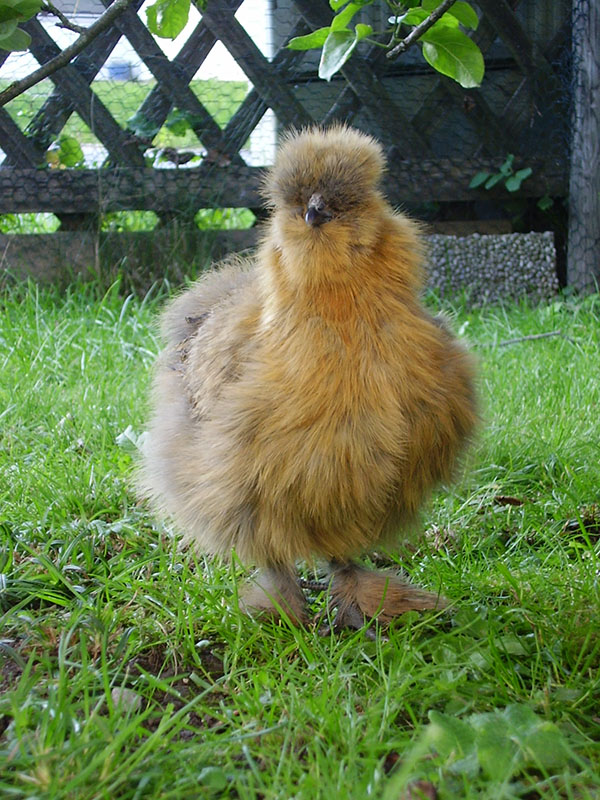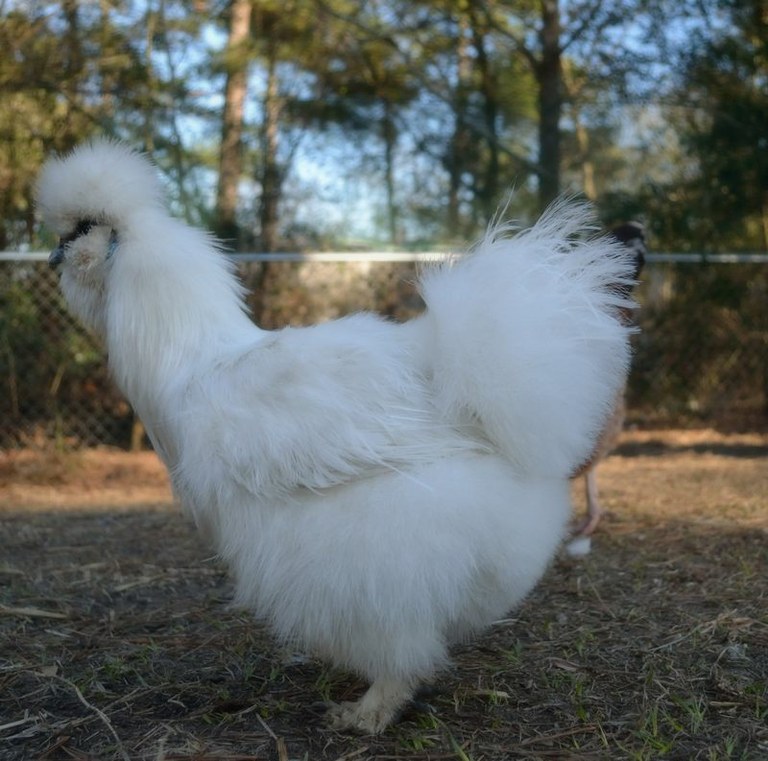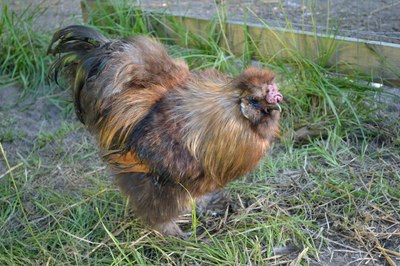Silkie (Bantam) Chicken
 In America, Silkies are considered bantams, whereas in Great Britain they are large
fowl.
In America, Silkies are considered bantams, whereas in Great Britain they are large
fowl.
Origins
The Silkie is originates from Asia, most believe China or Japan while others favor India. The exact location where they were found is not known, however, Marco Polo remarked in his journal a furry chicken on his travel through China in the 13th century.
Characteristics
The Silkie is considerable different from other breeds with its fur like feathers and black skin. The black skin is the result of a melanotic gene (Fibromelanosis), an autosomal dominant gene. The feathering is the result of an autosomal recessive gene that develops a lack of hooklets in the pennaceous feathers. After feathers can produce some hooklets in the wing feathers and shanks that is seen in other breeds of chickens, but in miniscule numbers. This is what give the Silkie fur-like feathering. This feature is also called Hookless. This trait is the cause of their flightlessness. The feathering is soft and downy, covering practically the whole body with the exception of the beak. Some Silkies have a crested head and are bearded and muffed The Silkie has a blueish-black beak, black eyes, ashen-blue legs, small wattles and very small walnut or cushion combs. The Silkie are known to go broody and lay few eggs. Another interesting feature of the Silkie is its fifth toe.
Standard Weights
- APA (Bantam)

- Cock: 36 oz
- Hen 32 oz
- PCBG
- Cock: 1.81 kg
- Hen: 1.36 kg
- Bantam Cock: 600 g
- Bantam Hen: 500 g
Varieties
- Black
- Blue
- Partridge
- Buff
- White
- Gray
All above varieties also are either bearded or non-bearded.
Egg Shell Color
Cream or tinted.
Uses
The Silkie is mostly used for ornamental purposes.
References
Valerie Hirvela, Secretary/Treasurer
6230 Virginia Lane
Seffner, Florida
United States 33584
Email: vhirvela@tampabay.rr.com
"APA Standard Of Perfection for Bearded Silkie." American Silkie Bantam Club. N.p., n.d. Web. 07 July 2015.Online Mendelian Inheritance in Animals, OMIA. Faculty of Veterinary Science, University of Sydney, 7 July 2015. World Wide Web URL: http://omia.angis.org.au/
Roberts, Victoria. British Poultry Standards (6th Edition). Hoboken, NJ, USA: Wiley-Blackwell, 2009. ProQuest ebrary. Web. 7 July 2015.
